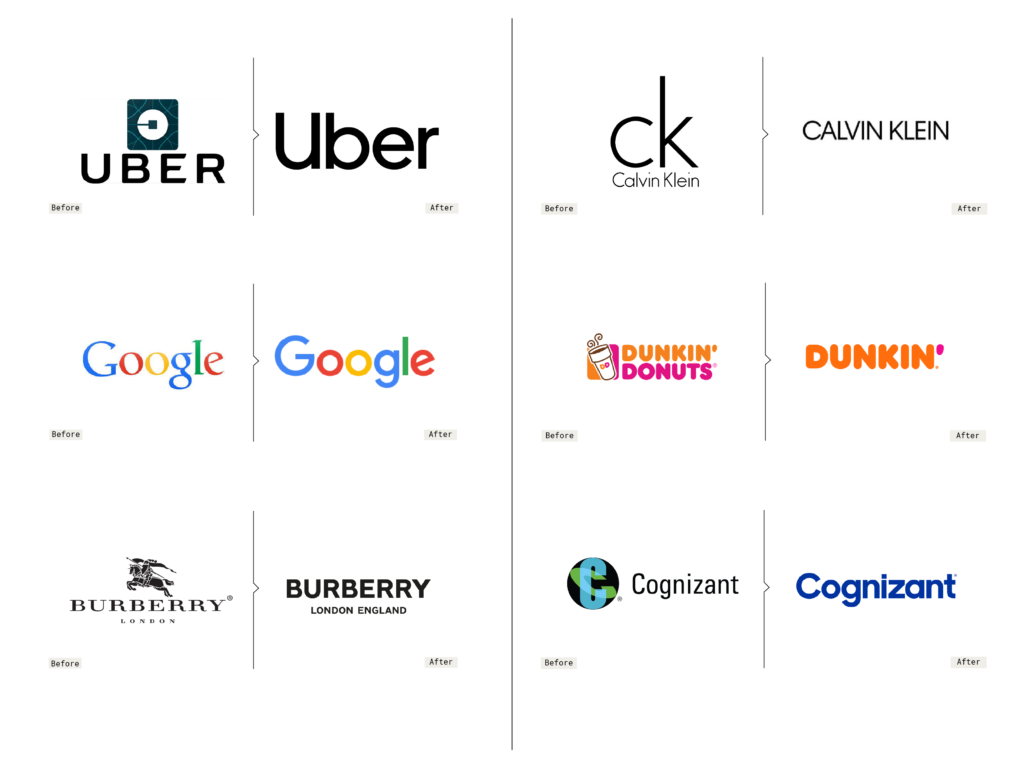Name recognition and omnichannel considerations are a vital part of any brand development process
Several rebranding of top companies in recent past reveals a common trend of simplified brand identities with an emphasis on wordmark. This simplification of brand identities has led to what designers call “Blanding”, a term for a simplified sans serif typography word mark identities which are quite indistinguishable from one another.
You can see the trend of simplification in some of these examples and companies like Burberry, Saint Laurent, Dunkin have even axed their long-standing logo marks.

While these rebranding are in line with the trend of minimalism in design, this alone does not justify the investments.
If you look deeper, there are two main reasons for brands to go for simpler identities — Name recognition and Omnichannel consistencies. I believe these two logical reasons must be basic for any branding/rebranding exercises in the digital age.
I. Name Recognition — Remember my name

We can identify two types of businesses, businesses which only exist in digital space like Uber, Google and the other whose revenue from online channels are continuously increasing like brands in fashion or food.
For both types of businesses, it is important that their customers remember their brand name. That’s the only way customers can search for them on the Internet/smart devices. Even for the voice search which is going to be 50% of all searches by 2020, according to ComScore, remembering the brand name is important. It’s not enough to make customer remember just the logo mark unless your brand name is Apple and symbol is also an 🍎
Association of logomark/color with a particular brand for a physical product or retail store is definitely useful as one could look for the brand in supermarket shelves or across the street even if they don’t remember the brand name. In India, while working for an engine oil brand packaging, I have seen people asking for a particular brand in retail by its packaging color as they often forgot the name of the brand they used last.
This is not to say that having a logo mark is a bad strategy. In a global market, logo marks can transcend the barriers of languages as it is constructed of graphic symbols. Also, In the long run, it always helps. Look at the brands like Apple, Nike, Starbucks among others whose logo marks are well recognized and have become iconic over a period of time. However, for start-ups where “Speed is the new currency of business” as quoted by Marc Benioff, of Salesforce, simple wordmark logos which aid name recognition can help quickly gain mindshare of the customers.
“Speed is the new currency of business”
Marc. R Benioff, Salesforce
II. Omnichannel branding
As the brand identities have to live in digital displays as small as favicons on the browser to larger than life billboards in the physical world, it is imperative for brand identities to be simple and made to work across mediums for brand consistencies. Take for example Ericsson rebrand, they have obsessed over the identity to work in every pixel situation. The logo mark was set at an angle of 18.435 degrees so that the borderlines of the symbol look sharp in even the tiniest of usages. The detail to that level is something to aim for.

For any rebranding or new branding, name recognition and omnichannel consideration must be top priorities to win in the digital age.

